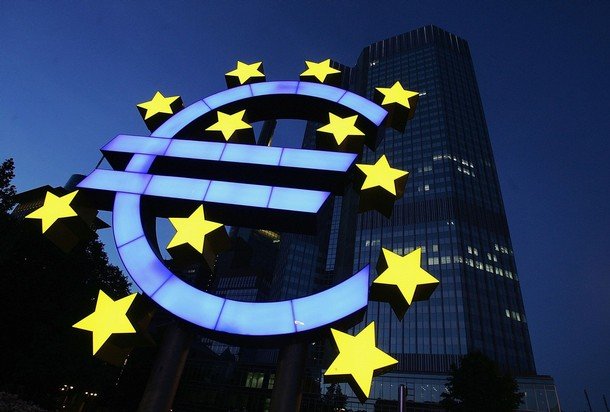ECB cuts benchmark interest rate to new record low of 0.5% to boost eurozone economy
The European Central Bank (ECB) has decided to cut its benchmark interest rate to a new record low amid ongoing worries about the eurozone’s economy.
The widely-expected cut to 0.50% from 0.75% is the first in 10 months.
Worries about eurozone economies were underlined on Thursday with data showing manufacturing activity across the 17-nation bloc shrank in April.
In Germany, the eurozone’s biggest economy, manufacturing contracted for the second month running.
Official data released on Tuesday showed record high unemployment in the eurozone, and inflation at a three-year low.
Ahead of the ECB’s announcement, many economists were forecasting that lower interest rates were likely, but said the fresh data released this week made the case for a cut even stronger.
ECB president Mario Draghi told a news conference that “weak economic sentiment has extended into the spring of this year.”
“Inflation expectations in the euro area continue to be firmly anchored.”

ECB has decided to cut its benchmark interest rate to a new record low amid ongoing worries about the eurozone’s economy
“The cut in interest rates should contribute to support a recovery later in the year,” he added.
There are concerns that the ECB’s low interest rates are not feeding through to those economies most in need of a boost, with potential lenders still worried about the economic health of countries such as Greece and Spain.
“Monetary policy stance will remain ‘accommodative’ for as long as needed,” Mario Draghi said.
“We will monitor very closely all incoming information, and assess any impact on the outlook for price stability.”
Mario Draghi said that the ECB was prepared to cut interest rates further should conditions make it necessary. He also said the central bank was “technically ready” for negative deposit rates.
The euro fell sharply on the comments, losing 0.6% against the pound to 84.135p, edging it towards the recent low of 83.98p that it reached on April 26. Against the dollar, the euro fell below $1.31.
In recent months there have been growing calls for European countries to move away from austerity measures, which critics say are stifling growth. Instead there are calls for a greater focus on stimulus measures.
Both French President Francois Hollande and newly-elected Italian Prime Minister Enrico Letta have urged a reconsideration of austerity policies.
On Thursday, European Council President Herman Van Rompuy said governments must take immediate action to promote growth and the creation of jobs because patience with austerity measures is wearing thin in some countries.
“Taking these measures is more urgent than anything,” he told a conference in Portugal.
“After three years of firefights, patience with austerity is wearing understandably thin.”
A cut in interest rates lowers the costs for troubled banks that have taken emergency loans from the ECB, and could help them repair their finances so they can improve lending. But analysts were divided over whether the cut would have much of an impact.
Purchasing Managers’ Index (PMI) on Thursday highlighted the problems facing many eurozone countries. The index for Germany’s manufacturing sector, which accounts for around a fifth of the economy, fell to 48.1 in April from 49 in March. A reading below 50 indicates contraction.
And in France, Italy and Spain, the eurozone’s next three biggest economies, the PMI data also revealed contractions in manufacturing activity.
For the 17-nation eurozone bloc as a whole, the PMI index fell to 46.7 last month, from March’s 46.8.
“There is nothing here to suggest that manufacturing will turn the corner and stabilize any time soon, putting greater onus on policymakers to act quickly to reinvigorate growth,” said Chris Williamson, chief economist at Markit, which collates the PMI figures.
[youtube hZjU7MV4xcM]
